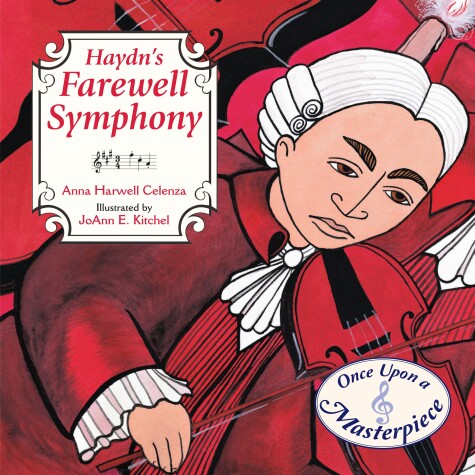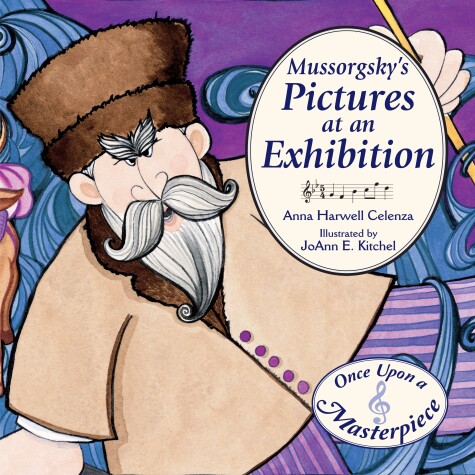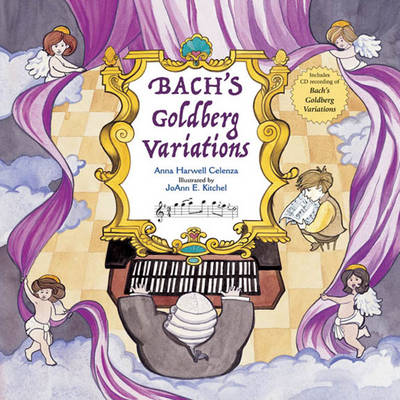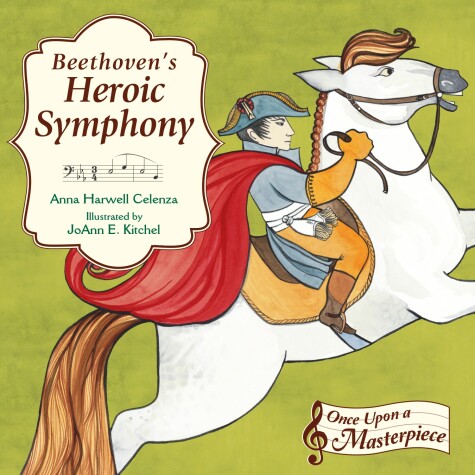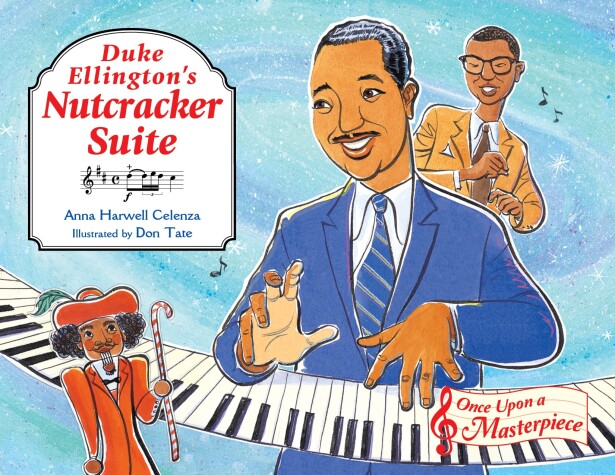Once Upon a Masterpiece
5 primary works • 6 total works
Book 1
Anna Harwell Celenza's engaging fictionalized telling of the story behind Franz Joseph Haydn's famous symphony is a perfect introduction to classical music and its power. THE FAREWELL SYMPHONY brings to life a long summer spent at Esterháza, the summer palace of Prince Nicholas of Esterházy.
The blustering, bellowing prince entertained hundreds of guests at his rural retreat and demanded music for every occasion. As the months passed, Haydn was kept very busy writing and performing music for parties, balls, dinners, and even walks in the gardens. His orchestra members became homesick and missed their families. The anger, frustration, and longing of the musicians is expressed beautifully in the symphony born of the clever mind of Joseph Haydn who used it to convince Prince Nicholas that it was time to go home.
Wonderfully expressive illustrations by JoAnn E. Kitchel capture all the comedy and pathos of this unique symphony. Beautifully interpretive motifs and borders convey the setting and emotion of the story mirroring the structure of the symphony with the repetitive use of sets of four. Making classical music and history come alive with color and character, THE FAREWELL SYMPHONY ensures a place for the arts in the hearts and minds of children.
The blustering, bellowing prince entertained hundreds of guests at his rural retreat and demanded music for every occasion. As the months passed, Haydn was kept very busy writing and performing music for parties, balls, dinners, and even walks in the gardens. His orchestra members became homesick and missed their families. The anger, frustration, and longing of the musicians is expressed beautifully in the symphony born of the clever mind of Joseph Haydn who used it to convince Prince Nicholas that it was time to go home.
Wonderfully expressive illustrations by JoAnn E. Kitchel capture all the comedy and pathos of this unique symphony. Beautifully interpretive motifs and borders convey the setting and emotion of the story mirroring the structure of the symphony with the repetitive use of sets of four. Making classical music and history come alive with color and character, THE FAREWELL SYMPHONY ensures a place for the arts in the hearts and minds of children.
Book 2
When his friend Victor suddenly dies, composer Mussorgsky is deeply saddened. But, with the help of his friends, and through his own music, Modest finds a way to keep Victor's spirit alive.
Readers of all ages will enjoy the inspirational story behind the composition of Pictures at an Exhibition. Bright, colorful illustrations incorporate elements of Russian folk art and traditional symbols. View pages from artist JoAnn Kitchel's notebook for explanations of the symbols and see her pencil-sketch research of the Russian culture.
Readers of all ages will enjoy the inspirational story behind the composition of Pictures at an Exhibition. Bright, colorful illustrations incorporate elements of Russian folk art and traditional symbols. View pages from artist JoAnn Kitchel's notebook for explanations of the symbols and see her pencil-sketch research of the Russian culture.
Book 3
Johann Sebastian Bach created some of the most significant music in history, including A Keyboard Practice Consisting of an Aria with Thirty Variations for the Harpsichord—commonly known as the Goldberg Variations. Goldberg is Johann Gottlieb Goldberg, a young musician in the court of Count Keyserlingk, a Russian ambassador living in Dresden. It isn’t known for certain why Bach’s difficult composition was named for the young man, but Anna Harwell Celenza gives us one possible story based on extensive research.
Book 4
Discover the little-known story of Beethoven's beloved masterwork.
As the best pianist in Vienna, Ludwig van Beethoven had everything: talent, money, fame. But he also had a terrible secret. He was slowly going deaf. Though his hearing deserted him, the maestro never lost his music. Seeking inspiration for his compositions, Beethoven hit upon Napoleon Bonaparte, then considered a liberator and a folk hero. Soon after Beethoven completed the work, Napoleon declared himself Emperor of France; betrayed and enraged, Beethoven tore his copy of the score to pieces. But his friend Ferdinand rescued a copy, and in time, Beethoven renamed it Eroica: the Heroic Symphony, dedicated to hero in each and every one of us.
As the best pianist in Vienna, Ludwig van Beethoven had everything: talent, money, fame. But he also had a terrible secret. He was slowly going deaf. Though his hearing deserted him, the maestro never lost his music. Seeking inspiration for his compositions, Beethoven hit upon Napoleon Bonaparte, then considered a liberator and a folk hero. Soon after Beethoven completed the work, Napoleon declared himself Emperor of France; betrayed and enraged, Beethoven tore his copy of the score to pieces. But his friend Ferdinand rescued a copy, and in time, Beethoven renamed it Eroica: the Heroic Symphony, dedicated to hero in each and every one of us.
Book 5
It's a challenge to transform the "Nutcracker Suite's" romantic orchestra into jumpin' jazz melodies, but that's exactly what Duke Ellington and his collaborator, Billy Strayhorn, did.
Ellington's band memebers were not so sure that a classical ballet could become a cool-cat jazz number. But Duke and Billy, inspired by their travels and by musical styles past and present, infused the composition with Vegas glitz, Hollywood glamour, and even a little New York jazz.
Ellington's band memebers were not so sure that a classical ballet could become a cool-cat jazz number. But Duke and Billy, inspired by their travels and by musical styles past and present, infused the composition with Vegas glitz, Hollywood glamour, and even a little New York jazz.
Suggests how the death of a friend, Victor Hartmann, inspired the music of Modest Mussorgsky in St. Petersburg in the 1870s.
